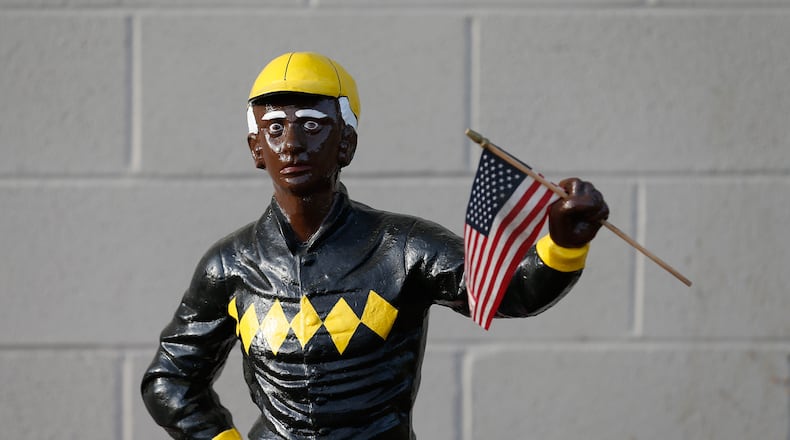- Anti-Trump ad uses undressed Melania Trump against him
- Family texts wrong number about birth of baby, strangers show up at hospital with gifts
- SEE IT: Smiling shark looks just like Bruce from 'Finding Nemo'
- Beer, potato chips spill on Florida highway after trucks collide
- Mom arrested after Facebook photo allegedly shows her smoking meth next to baby
Sitting on Sandra Dee McNair’s lawn is a ceramic statue of a black man holding a lantern, dressed in a jockey outfit, that everyone seems to misunderstand.
McNair explains, on Facebook, why her lawn ornament is actually a part of the fight against racism: it was once a tool used by the Underground Railroad.
She wrote:
I often get asked about my lantern footman sitting in my front yard. I've had black people say you shouldn't have that out that way "it makes people think you are a racist" I laugh, or "its offensive to white people" again I laugh and then explain what the significance of the lantern footman really is.
I'm really amazed at how a lot of people don't know the real meaning behind these statues, so they vandalize them, (expletive) about them being racist, etc. When the image of a black 'footman' with a lantern signified the home was a stop on the Underground Railroad. These are largely a northern thing, and weren't commonly found in the South until after WWII when northerners moved there and brought this custom with them. The clothing of the statue was also coded.
A striped jockey's shirt meant that this was a place to swap horses, while a footman in a tailed coat meant overnight lodgings/food, and a blue sailor's waistcoat meant the homeowner could take you to a port and get you on a ship to Canada. I always laugh when I hear black folks talk about how racist these are, because honestly, the cats who had them were likely the LEAST racist. Later, these came back into popularity after WWII, and they were again coded to show the white homeowners supported early civil rights efforts, weren't Klan, etc.
The symbol of the jockey goes back even further to the Revolutionary War and Jocko Graves, the Independent Journal reports.
As the story goes, Graves was serving with General George Washington, who thought him too young to bring along across the Delaware River for an attack on the British.
Instead, Washington left Graves in Pennsylvania to care for the horses and keep a lantern on at the river bank to help guide their return.
The young man froze to death still gripping the lantern. Washington was so moved that he asked for a sculpture to be made of Graves, which he named “The Faithful Groomsmen” and kept at his Mount Vernon estate.
Whether these stories are true or legend has yet to be proven.
About the Author
The Latest
Featured

